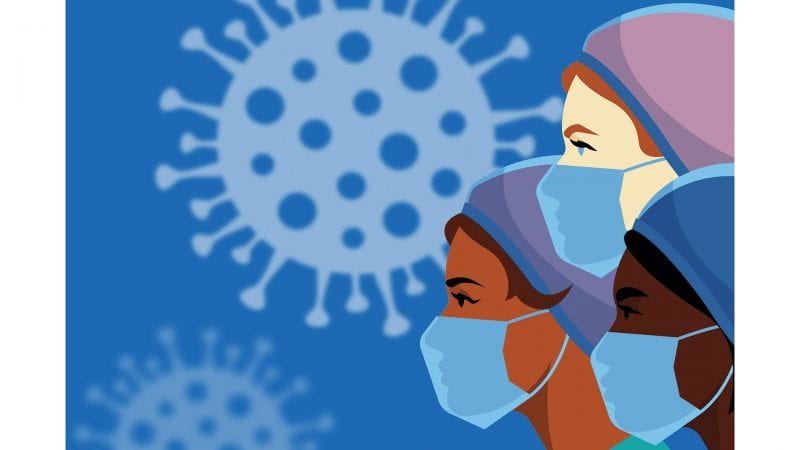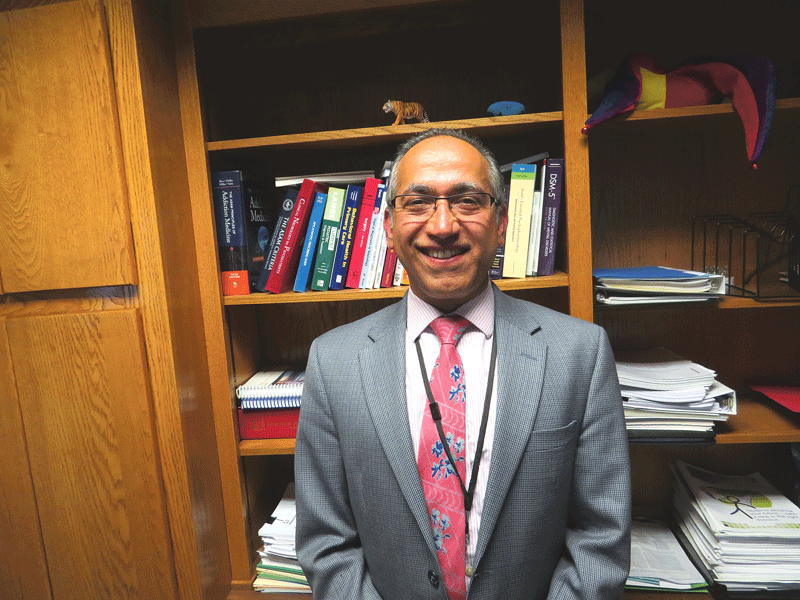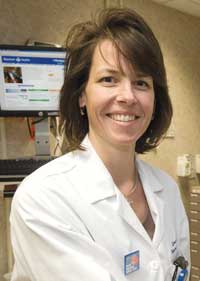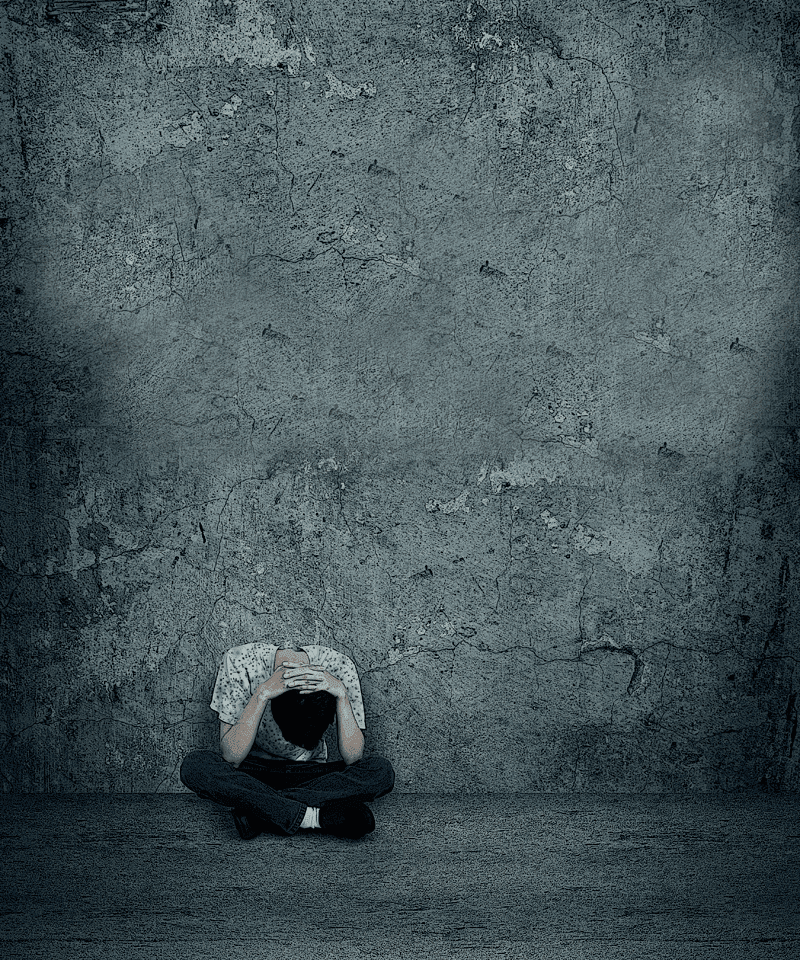A Salute to Nurses
Nurses Have Responded to the Pandemic with Resilience, Creativity
By George O’Brien
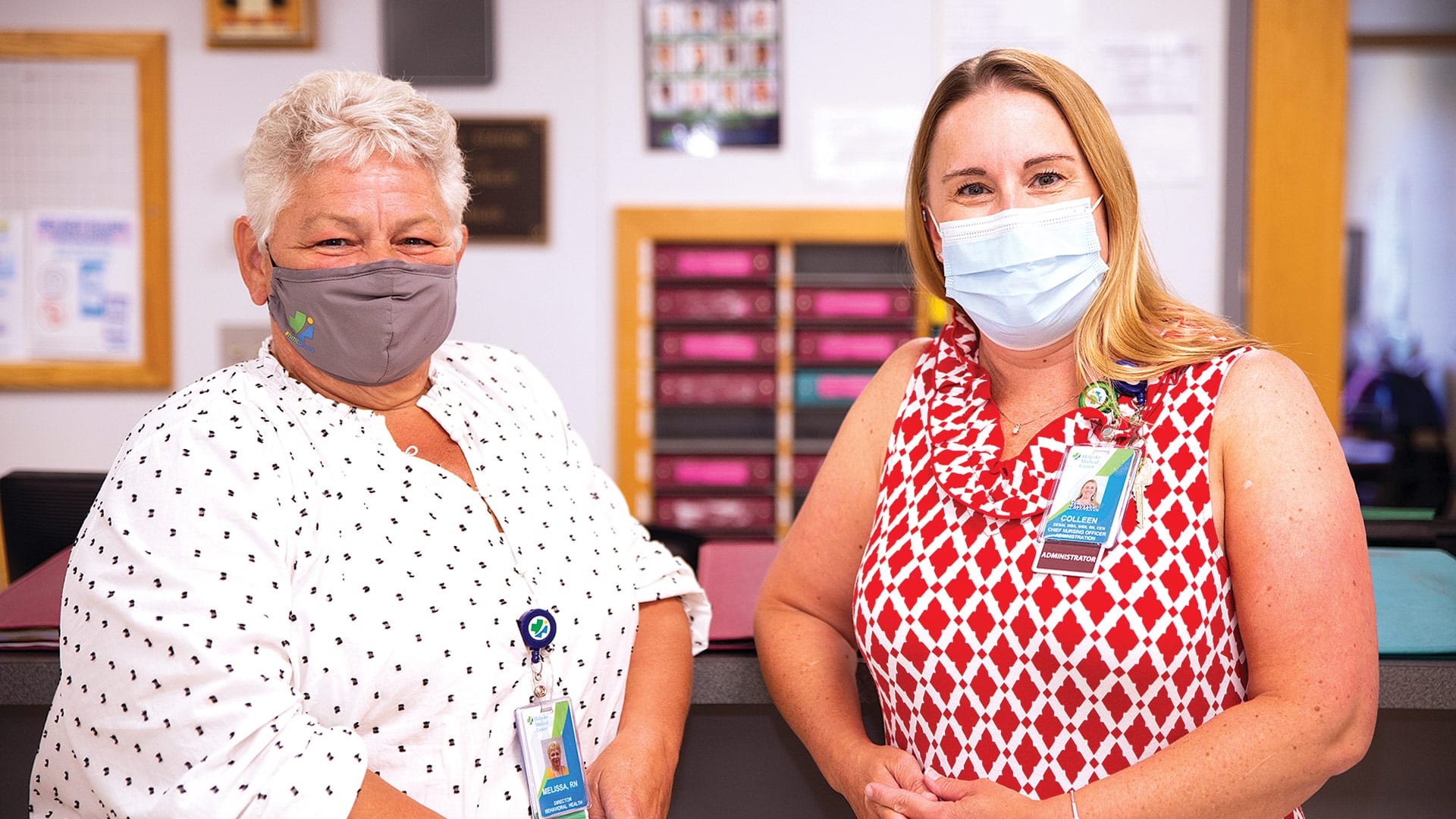
As she reflected on the past 15 months and how COVID-19 has impacted all those in healthcare and especially nurses, Colleen Desai recalled something one of her instructors told her in nursing school.
“It was something to the effect of, ‘the key to being a successful nurse is the ability to be creative and overcome challenge,’” said Desai, chief Nursing officer and vice president of Patient Care Services at Holyoke Medical Center (HMC), who doubted whether the professor in question was thinking about a global pandemic when passing on that advice.
But COVID certainly put that thinking to the test, she went on, noting that, during the pandemic, nurses have been overcoming a seemingly endless stream of challenges, and while they’ve used a number of qualities to clear such hurdles, creativity has been perhaps the strongest weapon.
“We had to shift and pivot quickly and do what we do on the fly — and it was a whirlwind,” she explained. “We changed how we do things on a day-to-day basis, and creativity was a key.”
Desai, like others we spoke to for this piece, said that nursing has always been a profession to test one’s mental and physical strength and resolve, with long hours, often difficult work, and ample amounts of stress. But COVID has taken things to a level never seen before by even the most veteran of nurses. They were pushed to the limit in every way imaginable, and in a setting that was dangerous, flooded with unknowns and uncertainty, and that left all those involved with daily concerns about their own health and well-being — and that of their families.
“We had to shift and pivot quickly and do what we do on the fly — and it was a whirlwind. We changed how we do things on a day-to-day basis, and creativity was a key.”
“We didn’t know the nature of this virus,” said Lindsey Gamble, director of Nursing at Mercy Medical Center. “We are all learning with the rest of the world. And I don’t know that you can ever be physically, mentally, or emotionally ready until you just do it.”
While COVID has prompted some to leave the profession for various reasons — including everything from work/life balance matters and post-traumatic stress, thus creating staffing issues on top of everything else — those who have remained have found the pandemic a stern test, but also a chance to learn and grow.
Those we spoke with had innumerable stories about nurses moving well beyond their assigned departments and comfort zones and stepping forward to do whatever was necessary, all while also balancing work and life, dealing with unknowns and constantly changing rules and protocols, donning and doffing PPE, and working even more hours than normal.
“People worked harder than I think they have ever worked in their lives,” said Desai, noting there was some attrition as the pandemic worsened (more on that later).
They also told stories about how nurses became liaisons between patients and their families at a time when they often couldn’t be together in the same room, and made sure that no one died alone.
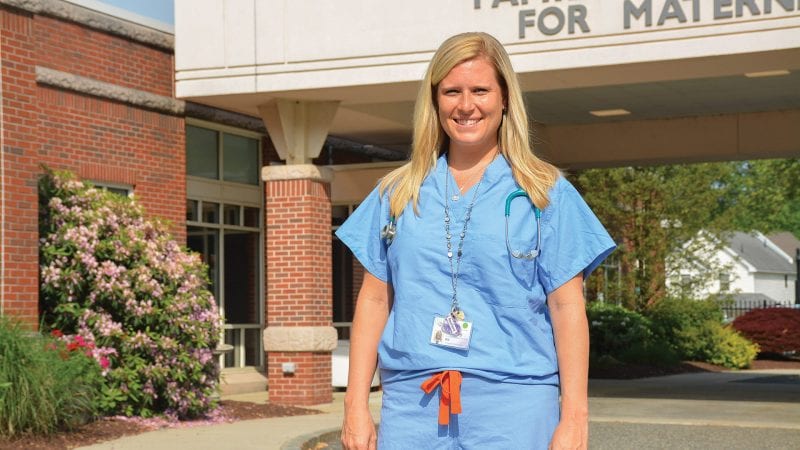
“It was a very emotional time,” said Christine Klucznik, chief Nursing officer and vice president of Patient Care Services at Baystate Health, who choked back tears while recalling how nurses stepped forward under these difficult circumstances. “We had so many people write to us about how this nurse or that nurse was there for them. They knew that their loved one was not going to pass alone; someone was going to be there with them.”
For those administering nursing staffs, this has been a stern test as well, a time to put all the experience they have to work, but also collaborate with others to find new ways to do things and cope with a situation the likes of which no one has had any experience.
“Everyone was scared inside,” said Gamble, who assumed that role just a month before COVID arrived in Western Mass. in March 2020. “But I needed to be that leader; you can’t react and show you’re afraid or that you don’t know what’s happening when you walk on a unit. Just having that calm presence and that sentiment — ‘I don’t know, but I’m going to find out; we will make this better’ — and just listening … that’s what they needed from me the most.”
Overall, those we spoke with said this is a time (yes, the present tense is still very apt) to collaborate and innovate as never before, and, as Gamble said, do a lot of listening and learning. For this issue and its salute to nurses, we examine how area nursing staffs did all of that — and combined compassion with resiliency and creativity to stare down a challenge that was truly unprecedented.
Changing on the Fly
Flashing back more than 15 months to the beginning of March 2020, Klucznik recalled the day COVID arrived at Baystate.
There had been a number of discussions prior to that first case about how to prepare, and general thoughts that the medical center was ready, she told HCN, adding quickly that there was simply no way to be totally prepared for what was about to happen.
“Within a day … it just exploded — it was really like nothing we had ever seen,” she recalled. “And the hardest thing for the entire medical community was that no one knew what they were doing. We heard about what was happening on the West Coast, watching it evolve and spread so quickly. But when it hit, we went from two patients to 100 patients in the span of a couple of weeks.
“We had to shift and pivot quickly and do what we do on the fly — and it was a whirlwind. We changed how we do things on a day-to-day basis, and creativity was a key.”
“It was like building a plane while it was flying in the air — it was quite incredible,” she went on, adding that, as units of the hospital were converted from their traditional uses to COVID care, nurses found themselves working in different areas of the hospital and with people they didn’t know, and caring for a population they knew nothing about.
“When you think about all that change, and the nurse’s ability to say, ‘today I’m doing cardiac nursing, and the next day I’m taking care of COVID patients,’ it says a lot about their resiliency,” Klucznik said. “And then you think about the moral distress — they’re trying to make sure that they stay alive and that their families don’t get sick, because we didn’t know what the exposure was.”
Others we spoke with told similar stories about nurses transitioning to new roles and accepting new responsibilities (leaving research or education and moving to the ICU, for example), working with people they’d never worked with before, going to great lengths to assist the families of patients in the hospital, and much more — all in a stress-filled, tension-packed environment where change was constant and uncertainty ruled the day.
In that setting, Desai kept thinking about what her nursing instructor said to her all those years before about creativity and overcoming challenge, and how you need the former to accomplish the latter.
She has many examples, and started with the glass doors to the HMC intensive-care unit and how the nurses made full use of them to preserve precious PPE.
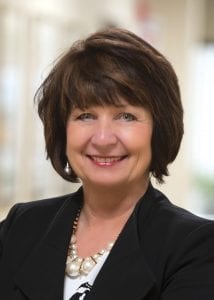
“To keep from going in and out of rooms, they learned very quickly how to communicate via the glass,” she explained. “They would take dry-erase markers and write on the glass the patient’s vital signs, what their assessments were, and notes to themselves so they could go back and document them later. That prevented them from bringing in paper and pens and other things that could get cross-contaminated, or their computers on wheels, which we certainly didn’t want contaminated, and it made for super-efficient care.
“They were also communicating with each other, because you couldn’t hear really well through the glass, and if someone needed a piece of equipment, they would write it on glass for their colleague to get for them,” she went on. “It was really ingenious.”
There are countless other examples of creative thinking, she said, adding that the past 15 months have been marked by teamwork and camaraderie on levels she had never seen previously, especially when it came to taking care of residents of the nearby Holyoke Soldiers’ Home, who were relocated to HMC amid a fierce COVID breakout that would eventually claim more than 70 lives.
“Because elective surgeries were suspended, many of our surgical services staff gave their services to these veterans, developed strong bonds with them, and really shined during this time,” she explained.
Elaborating, she said nurses, and other personnel as well, were often thrust into new roles, where they worked in different areas of the hospital and with people whose names they knew only from the badges on their uniforms. This created stress on some levels, but also a greater sense of teamwork — and some new friendships.
Klucznik agreed. “People would say, ‘I never met so and so, but now, she’s my best friend.’ They learned to trust quicker because it was a war zone in the beginning; that’s the best way I can put it.”
Stepping Up
And the work didn’t stop when the 12-hour shift (which usually became 13 hours or more) ended, said those we spoke with, adding that nurses often became trusted consultants on all things COVID for a family, a neighborhood, or a business.
“I think I became the nurse for my father’s business,” said Gamble, adding that phone calls and e-mails came at all hours of the day from people who had questions and needed answers from someone they trusted. “I was the nurse for neighbors, my family, and their businesses because they didn’t have an infection-control nurse like we do here.”
Desai concurred.
“Our work didn’t stop when we left our jobs — phone calls happened all night long, from family and friends and friends of friends and family of friends,” she said. “Everyone knows a nurse, and nurses are a source of truth and information, so we did a lot of alleviating fear and anxiety and public teaching and information sharing. It was incessant, it was non-stop, and it still hasn’t stopped. People have questions about the vaccine, about whether they should be wearing a mask — every day we’re inundated.”
To help these nurses deal with all that COVID threw at them, hospitals, with considerable amounts of support from the community, created various support networks, if you will.
“We had so many people write to us about how this nurse or that nurse was there for them. They knew that their loved one was not going to pass alone; someone was going to be there with them.”
At Mercy, this support took many forms, said Gamble, who listed everything from community donations of meals, food, and cards expressing appreciation to the comfort cart, which supplied snacks, juice, water, chocolate, and more, to what came to be known simply as ‘resiliency rounds.’
“These were moments when the nurse leaders — myself, the directors, managers, assistant nurse managers … they would come to a unit and say, ‘guys, we’re going to watch all your patients,’” she explained, adding that the nurses being relieved would take part in sessions marked by quiet reflection, meditation, and questions and answers with Mercy’s mission team.
Later, 10-minute yoga sessions and even pet therapy were added to the regimen in an effort to help nurses manage stress and strain, said Gamble, adding quickly that, even while COVID cases continue what has become a steady decline, this work continues because the need remains.
Klucznik agreed, noting that Baystate has implemented a number of initiatives to help nurses (and all personnel, for that matter) cope with the physical and emotional strains from COVID — and there are many.
“We worked with our department of Psychiatry and set up a whole response where there would be counseling available to staff who wanted to take advantage of that,” she said. ‘And our Spiritual Services team was unbelievable, making sure that they were rounding to all the units, talking to staff, and giving them time to share their grief and whatnot.”
Elaborating, she said staff members, and especially nurses, were, and still are, coping with many different forms of stress.
“Teams were broken up,” she explained. “And people come to work because, while they like their work and their patients, they also like their supervisor and their staff, and now, they couldn’t even take a break together. They couldn’t eat and enjoy each other’s company because we had to socially distance from one another and keep each other safe. All of these additional factors could affect one’s ability to de-stress.”
For some in the nursing profession, the pandemic and all that came with it proved to be too much, and for some, it was enough to push them into retirement somewhat earlier than they had planned. Meanwhile, for those with families, COVID forced some hard decisions.
“I know a lot of nurses who said, ‘I have to go per diem or I have to go part-time — I don’t know what else to do; my kids are home,’” Gamble said.
Desai agreed, noting that, while there was an abundance of staffing at the beginning of the pandemic as education and training nurses and even some retired and quasi-retired nurses volunteered for the front lines, as things worsened, the attrition did as well.
“We did have people drop off our rosters,” she explained. “The dark reality is that some nurses tapped out and said, ‘this isn’t for me, I can’t do this every day, I’m exhausted.’ Some people took early retirement, and some people just frankly had post-traumatic stress. The sadness of COVID is real, and we definitely took the stance that no patient was going to die alone, and they didn’t. But the amount of death that some people saw took a toll on them, and they bowed out of the profession.”
Lorraina Smith-Zuba, executive director of Perioperative Services at HMC, concurred, but noted that, throughout the pandemic and the various forms of attrition that have occurred, others have stepped up to fill voids and cover for others when the need arose.
“We’ve all pitched in,” she said. “Everyone stood up for everyone else.”
Bottom Line
Looking back on the past 15 months, Desai said she and most others in this profession have been too busy dealing with all that is in front of them to take a deep dive into the past and fully reflect on all that has happened.
“I don’t think any of us have had the time to process yet, debrief, and really make sense of all we’ve been through,” she told HCN. “We’re still very much in the heat of it.”
Still, one thing seems clear. Her nursing instructor was right; success in this line of work comes from being creative and overcoming challenge.
The region’s nurses have proven that time and again since March 2020, and they keep finding new ways to make that point. COVID has tested their mettle in every way possible, and in most all ways, they have certainly passed the test.

